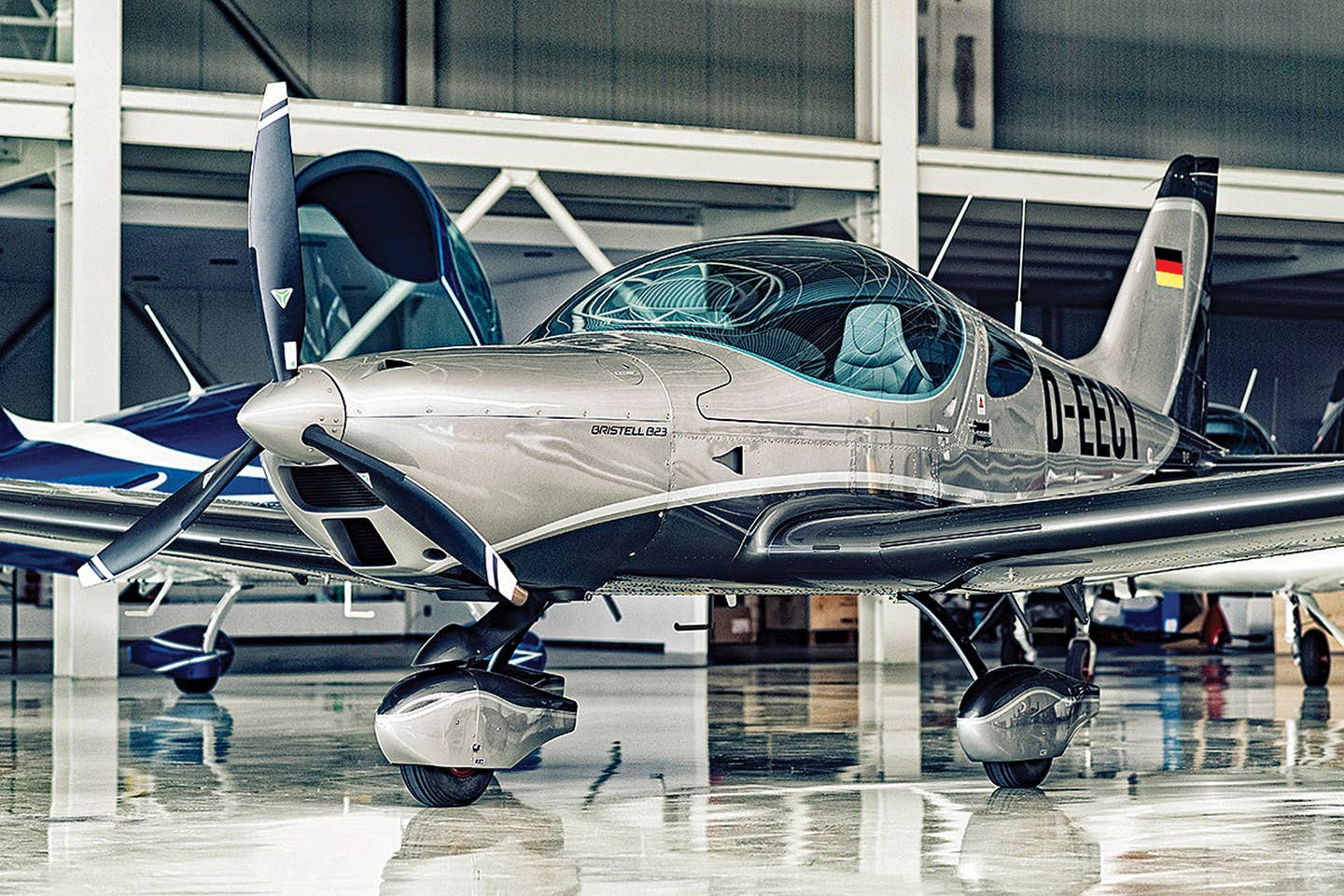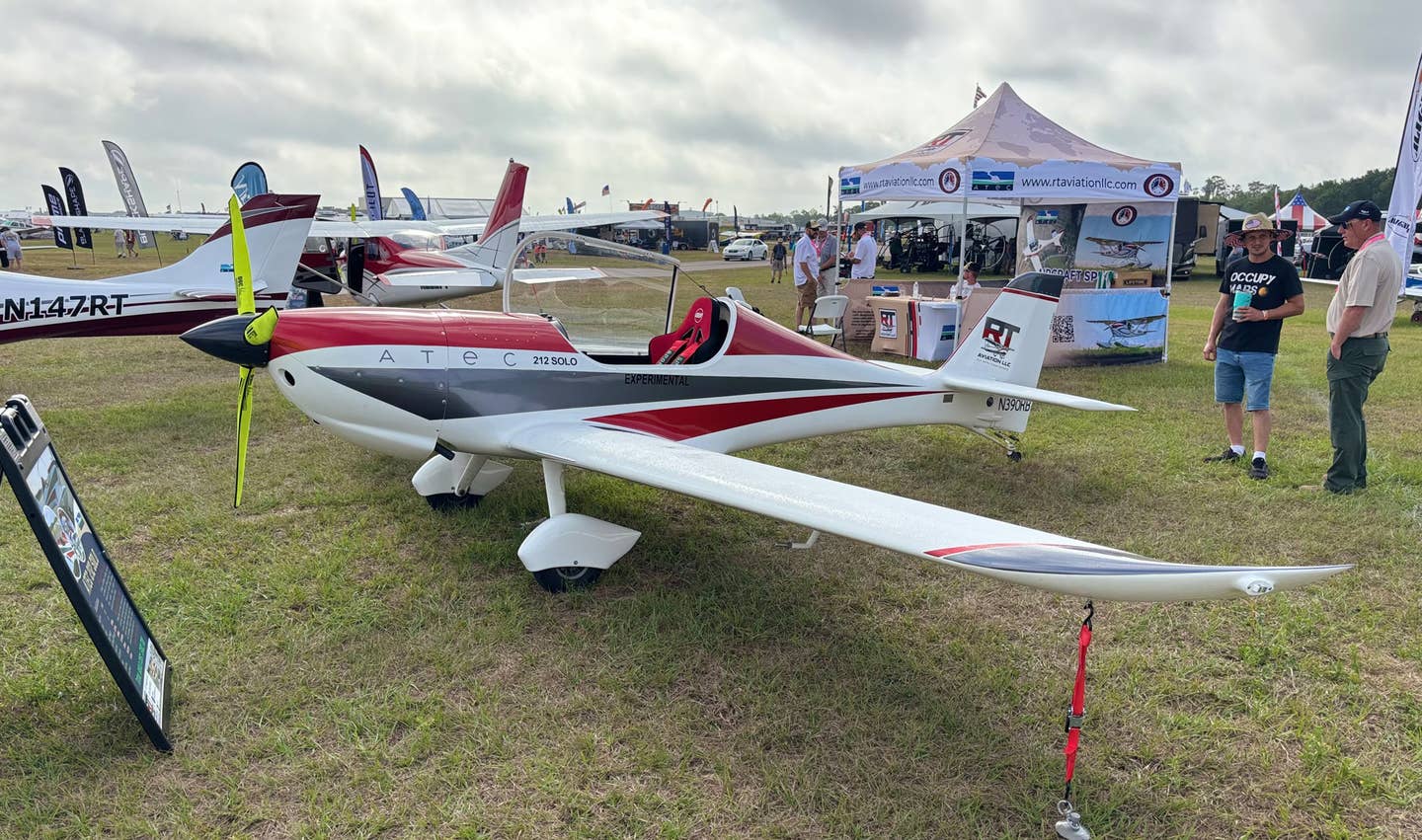Affordable Aviation: Sparker Packs in a Lot for the Budget
Some pilots can hardly wait for MOSAIC. It takes all kinds, of course. Many aviators want to use sport pilot’s no-medical aspect to fly a Cessna or Piper that they…

You’ll need a generous budget, but you will get a lot for your money. [photo by Dan Johnson]
Some pilots can hardly wait for MOSAIC. It takes all kinds, of course.
Many aviators want to use sport pilot’s no-medical aspect to fly a Cessna or Piper that they can buy inexpensively (or may already own). That makes sense. These affordable aircraft are familiar and proven, even if they are products of the 1950s with mostly analog instruments and powerplants that burn 10 to 15 gallons of 100LL per hour.
Another group, owners of modern LSA, wants a little more weight than allowed by current regulation. Still, others may want to fly at night or in IFR or to use an economical LSA for some form of aerial work.
Then we have what I’ll call the MOSAIC LSA crowd. These are pilots with larger budgets—perhaps they sold a Cirrus or Bonanza and have equity to put toward a new aircraft. These experienced pilots are accustomed to well-equipped aircraft with generous cruise speeds.
Sparker directly addresses the last group. I got to experience this first-in-the-U.S. airplane when TL Sport Aircraft owner Trey Murdaugh brought it from Charleston, South Carolina, to my home airport, Spruce Creek Fly-in, near Daytona Beach, Florida.
Sparker Arrives in the U.S.
Spruce Creek Fly-In is a place, not an event. It’s the world’s largest private airport, with more than 700 aircraft based at the field. That means lots of pilots, many whom have long flying histories, often with the airlines.
Show up at Spruce Creek (7FL6) on a nice flying day with a sharp new airplane, and you are almost certain to draw a crowd. Sparker did. We almost had to shoo people away so we could get on with our demo flight.
We enjoyed a lovely Florida day in early February as you can see in the images or in the fresh new video below.
Our demo flight took us from Spruce Creek (7FL6) to DeLand (KDED) and back with maneuvering in between. We operated at altitudes of 1,200 to 4,500 feet on a mild day in the low 70s with modest humidity. My focus was on aircraft maneuvering and flight controls, because the deluxe instrumentation is already familiar to pilots and because I would use Murdaugh's experience at flying from South Carolina for cross country speeds and fuel burns; these provide real-world experience, not a test pilot’s controlled findings.
Sparker Deluxe
An aircraft is not just simply a bunch of performance specifications. Creature comforts are also important in this class of flying machine. Sparker satisfies.
Any producer looking to sell an advanced aircraft such as Sparker better make it deluxe, and TL did. From its 50-inch-wide cockpit (a foot wider than a Cessna 172), Kevlar cockpit cage, and potent engine, to its airframe parachute, Sparker lacks for little. Yet “little” isn’t what TL designers sought.
Large comfortable seats are fixed in position, but rudder pedals adjust electrically. A button in front of each outside-mounted joystick smoothly moves pedals to meet your feet. The joysticks bristle with buttons for trim control, PTT, autopilot off, or frequency toggle.
The seats have tall back support and are electrically heated for colder climates or higher altitude operation. You can load up those seats with some larger pilots.
At its new gross weight (1,652 pounds, according to Murdaugh), Sparker has a useful load that accommodates (get this!) two 230-pound occupants, plus 75 pounds of luggage, plus 34.5 gallons of fuel. Numbers like that cover most requests I’ve heard. “You’d be hard-pressed to max-out Sparker’s useful load,” Trey concluded.
All instruments are within a comfortable reach and TL installed more screens than other LSA, a total of three 10-inch Garmin G3X Touch EFIS units. Various IFR avionics are also available to complement the Garmin suite. Autopilot controls are mounted in the center T-console for easy adjustment.
Here’s perhaps the best innovation on Sparker. This is a retractable gear aircraft and you can’t see the gear (as on most low-wing retracts). Usually, designers offer lights or some other gear position indicator. You have to believe the equipment. On Sparker, you can believe your eyes as designers thoughtfully added a nearly-invisible, belly-mounted tail camera that faces forward. This provides unmistakable confirmation of gear position presented to the pilot on one of those big screens. Perfect!
If that’s still not enough, TL designers made some slick panel pull-out trays that can hold a smartphone or iPad mini to use with a navigation app. Oh, yeah, the tray also has a cup holder.
Sparker By the Numbers
Sparker descends from a line of impressive aircraft—Sting, Sirius, and Stream—and it shows. Using skills acquired over 34 years in business, TL’s newest model is loaded with special features you won’t find on most LSA or mLSA candidates.
It’s built mostly of carbon fiber with Kevlar reinforcements around the occupants. The main spar is also carbon fiber. Capable of an 11 G ultimate load, Sparker felt absolutely solid and rigid in the air, even when banked aggressively back and forth.
Essentially a side-by-side version of TL’s tandem Stream, Sparker uses the wings and tail of the earlier model, which was released in 2015 as Rotax was debuting their 141-horsepower 915iS engine. Our demo Sparker had this potent engine and Murdaugh provides climb rate, cruise speed, and other numbers in the video below.
He also noted that TL anticipates installing mostly the newer 160 horsepower Rotax 916iS engine, which launched with a 2,000-hour TBO. In the video Murdaugh provides some detail about performance expected with the more powerful engine.
One area I discovered may require TL’s focus as MOSAIC approaches. Sparker’s stall was well controlled and mild but it came at 58 knots. FAA proposed a 54 knots clean but many have commented to raise this by a few knots. Regardless, I feel sure TL engineers can compensate.
As we reduced speed to slow flight in preparation for stalls, Murdaugh put flaps down without lowering the gear. Immediately, an unmistakable alarm began to warn a landing pilot that the gear was not extended. You cannot ignore this sound.
My usual Dutch roll coordination exercise went well after only a few reversals to figure out the control applications. Sparker needs approximately equal amounts of stick and rudder. The controls are slightly heavy but the aircraft is very responsive. The dampened handling makes Sparker comfortable as you are less likely to overcontrol. As my experience grew Murdaugh permitted me to bank steeply where I found Sparker eager to do my bidding. Even in very steep banks, Sparker maintained altitude easily.
I performed the landing back at Spruce Creek with Murdaugh relaxed after I had demonstrated I could feel the airplane fairly well. Reducing to 90 knots on downwind to lower the gear, we slowed to 75 knots on final before putting down full flaps (45 degrees) to slow to 70 over the numbers. Touchdown was smooth and easily controlled. Brakes are quite strong and we turned off easily before maneuvering to a parking space.
Sparker is going to please the MOSAIC crowd. At $327,000, this is no Part 103 ultralight or sport pilot kit aircraft. You’ll need a generous budget, but you will get a lot for your money. So far as I could see, TL didn’t miss a trick with Sparker. Check it out in person at Sun 'n Fun.

Subscribe to Our Newsletter
Get the latest Plane & Pilot Magazine stories delivered directly to your inbox






